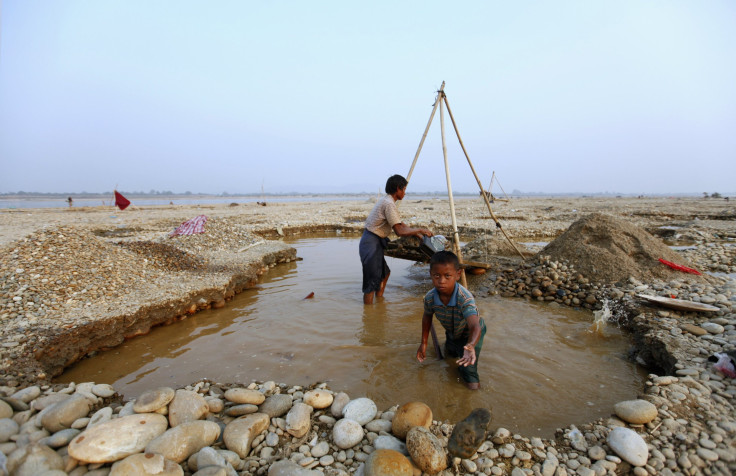Myanmar's Gold Industry Prospers While Its Miners Die From Lung Disease

Myanmar’s gold production has been steadily picking up and could prove a key driver for the country’s economic growth, but many gold miners are suffering from lung diseases due to inadequate equipment and antiquated practices.
The government once owned all of the country’s gold mines, but following the fall of the junta in 2011, many of the mines were sold off to private owners. Previously, Myanmar produced just 100 kg of gold each year, but privatization and an easing of international sanctions have allowed that number to double, the Global Post reported on Monday.
But upbeat production and private ownership have not improved the adverse working conditions Burmese miners have grown accustomed to. In the more than 30 active gold mines in the mining towns of Sinktu and Thabait Kyin in the Mandalay division, half-naked men equipped with rusty pneumatic drills and homemade dynamite are lowered 500 feet on ropes into holes in the ground, their faces covered only in rags.
“We break the rocks with high pressured guns, but breathe the small particles that come from breaking the stone. We contract lung infections that we call 'gun disease,'" said Wat Tay, a 35-year-old gold miner from Sintku Township, according to the Global Post.
“The owners of gold pits don't care about the health issues of the miners, so the health problems are increasing. They don't pay for safety protection for us, so we make do ourselves, like putting some clothes over our mouths, or buying cheap masks to reduce the dust we breathe in,” Wat Tay added.
The government, mine owners and the ministry of mines have seen potential in the industry and are now trying to pursue foreign investment for the sector. The goal is to reduce poverty rate from 26 percent to 16 percent by exporting gold by 2015, but the added demand means an increased need for manpower, working hours and medical support.
Mine owners do not provide respiration equipment, and the miners are too poor to buy the equipment themselves. There is also no health care system for miners and no formal diagnosis for “gun disease.” When workers’ lungs begin to give out, they are given a tank of oxygen, and left to fend for themselves. Most are too weak to pursue other employment, and live out the last days of their lives in their huts.
“I can't breathe well. If I breathe, my abdominal muscles are tight and it hurts also in my back,” said Kwin Tone Sel, a 42-year-old former miner in Sintku whose lung disease prevented him from leaving his bed, the Global Post reported. “I feel pain when I breathe. Twice they've given me pills for tuberculosis, but this medicine has no effect for me.”
Gold mining is not the only sector of Myanmar's mining industry to be riddled by backward practices, rudimentary equipment and suffering miners. Jade mining is one of the country's major industries -- tens of thousands of workers are exploited, and heroin is abused on an unprecedented scale, creating one of the world’s largest HIV-infected communities.
© Copyright IBTimes 2024. All rights reserved.











